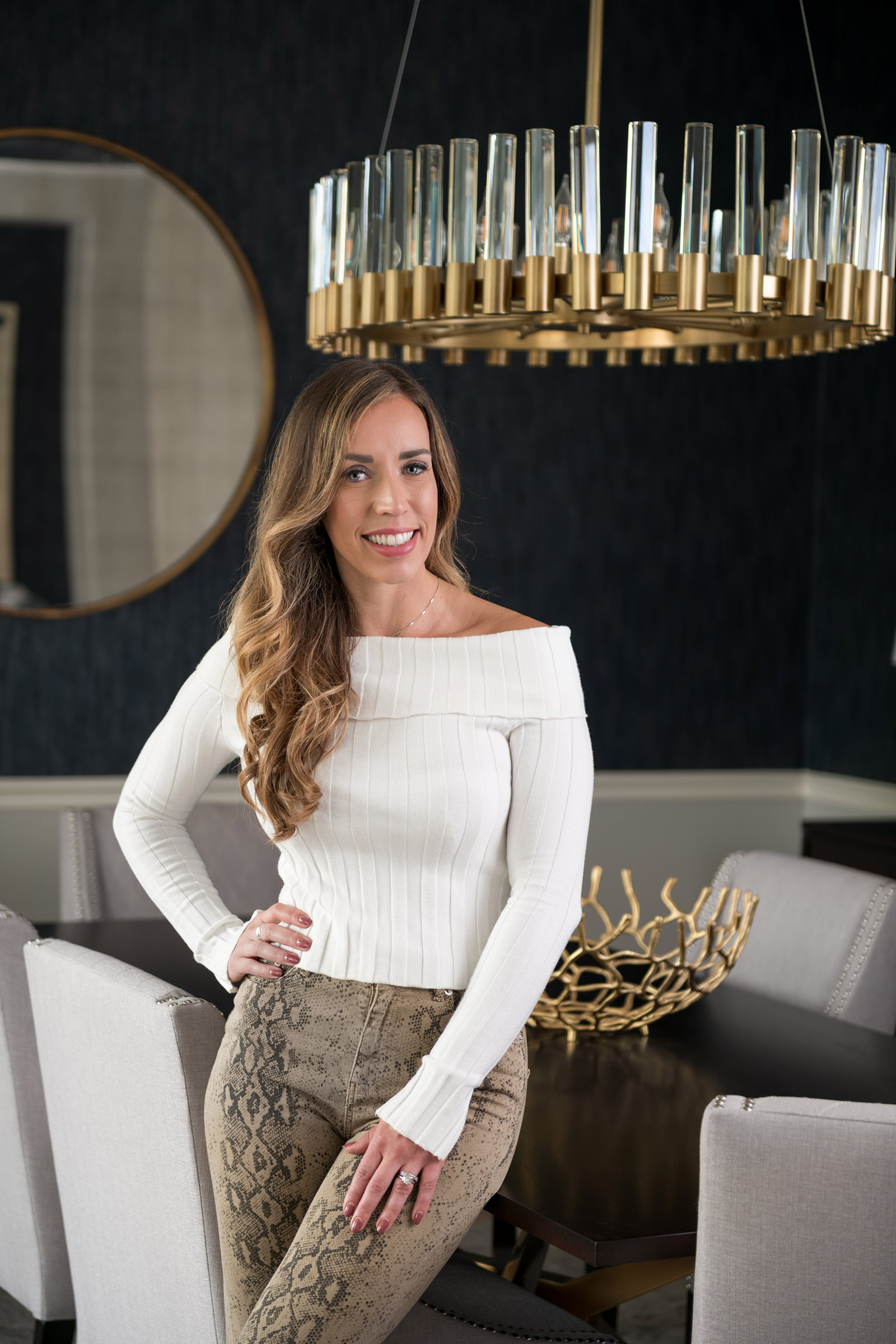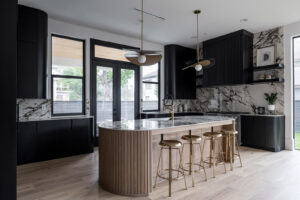Experienced Designer Uses Math and Art for Timeless Spaces


Designer Jessica Kolter was born and raised just south of Detroit, Michigan, where her parents both were raised and worked as nurses. Although the medical field was close to home, Ms. Kolter realized early on that she loved creating beautiful spaces. In school, she excelled in both mathematics and art, and this sparked a drive to utilize both of these skills. This passion drove her to enroll in the Interior Design program at Michigan State University. The Interior Design College is a CIDA-accredited program, which sets it apart from many design schools and allows it to be selected for enrollment. Upon completion of her degree, Ms.Kolter went on to work in Design Sales while studying for the NCIDQ Exam, a licensing exam for Interior Designers.
After receiving her certification, Kolter worked at a commercial architecture firm in the Washington D.C. area specializing in government-sensitive compartmented information facility (SCIF) spaces, Google facilities, and other commercial spaces. Kolter became active in trying to better her community, which drew her to join the Loundoun Preservation Society, where she was recognized as one of Loudoun Counties 30 under 30 young professionals to watch. While working there, she met her now husband, Evan, who was a financial consultant. They lived in the D.C. area for a couple of years before relocating for his work to Toronto, Ontario.
Where she worked for a high-end residential interior design firm and was mentored by one of Toronto’s top designers; after five years in Toronto, Kolter and her husband moved to Philadelphia, where she started her own design firm. She joined the Washington Square Civic Association to volunteer to be a part of the community and help keep the historic block clean. Later after moving to Philadelphia, she and her husband welcomed a baby boy, Jack. After about 3 years in the Philadelphia area, her family relocated to Houston, where she has been an active member of the architectural committee in her neighborhood and volunteers with her son’s sports.
Intown: With the trends constantly changing, how do you design to be more timeless?
Kolter: I have a great appreciation for classic architecture and design. When there are classic details such as moldings, trim, and cabinetry done in a way that reflects history, it’s easy to embellish the timeless elements with more fun trends such as tile, light fixtures, and hardware. The “bones” will give the home a classic aesthetic, while the fixtures and furnishings can be more edgy to play up trends. It’s easy to change out a light fixture or furniture piece in a few years without enduring a major renovation. This allows for the home to be contemporary yet classic all at the same time.
What are some of the new latest and more long-lasting trends?
Some of the newest and most long-lasting design trends are curves, arches, and organic shapes. We’ve long seen the hard square lines in homes, but now, it’s all about adding softness with an arched entry or window. Playing up softness with curved sofas or chairs and adding elements of organic lines with playful shapes of mirrors and tables. It adds personality and creates whimsy interiors.

What part or parts of the house do you consider most important in looking for home value or saleability?
It’s no secret that the kitchen is the heart of the home, and I feel this space truly reflects the home. It’s the space we spend the most time in, whether it’s entertaining, cooking for our family or just enjoying a cup of coffee alone, we all spend endless hours in the kitchen. It should be inviting, incorporate some natural light, offer tons of storage, and have a strong focal feature. Open concepts are highly desirable, encouraging us to entertain and draw family near.
How much do you incorporate visual and tactile textures in your design?
Textural interest is a MUST in every design. It can make or break a design. You need to have a variation of textures and tones, and the scale of each should complement each other. This gives the space a more interesting feel. You may not even realize what draws your eye to your favorite space in the city, whether it be a coffee shop, restaurant, or spa, but I guarantee each space has something in common, they have a great mix of tactile textures that make them shine. The same is true in your home. We add texture in so many ways, for example, with tile, wallpaper, natural woods, and furnishings.
What types of cabinet updates are you making and recommending for clients?
I’m in love with natural wood cabinetry at the moment. Doing white oak or walnut cabinetry is a great way to create a warm, inviting space. I also find that doing drawers over cabinet doors has become one of my design staples. Not only do we find them aesthetically pleasing, but they are highly functional and make for spaces that are easy to access and keep spaces tidy.
 Why is it important to hire a professional?
Why is it important to hire a professional?
Making design decisions is overwhelming, and making them in haste can be extremely costly when making mistakes. Design professionals offer expertise in this area, they know how to explain the pros and cons of each decision. They have experience and can help educate so that you aren’t just choosing from an assortment of finishes at showrooms but can explain how it wears, maintenance, style trends, and how each item will impact the look and feel. Also, we take the time to show you scale drawings and take the guessing game out of design. Making sure you maintain proper clearances and have ample storage and lighting are some key design points we often correct. But mostly, it’s so that you can enjoy the process, design should be fun! That is what we are here for, to take the pressure off the client so they can enjoy seeing the transformation, its the best part of my job.























